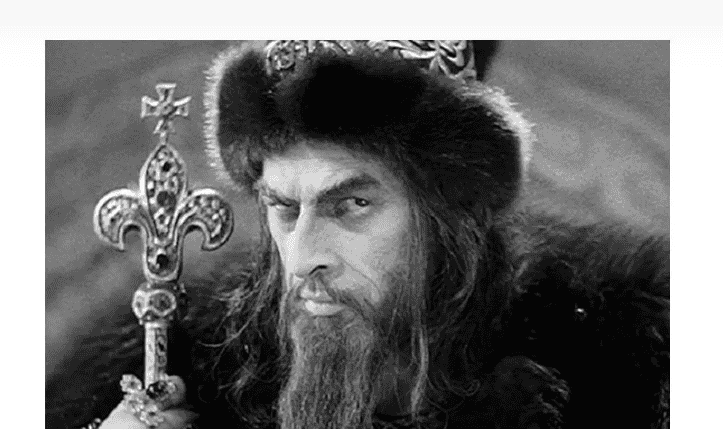Ivan the Terrible is often thought of as a brutal tyrant who ruled with fear and iron. Is that the whole story, though? Ivan the Terrible, also known as Ivan IV Vasilyevich, was more than just a ruthless despot. His rule was a watershed in Russian history, and he was a complicated individual. Ivan continues to be one of the most intriguing—and divisive—figures in world history, from founding the centralised Russian state to carrying out unspeakable acts of violence. We’ll look at fascinating Ivan the Terrible facts in this post that help solve the mystery surrounding this notorious Tsar.
Early Years: An Unruly Prince
On August 25, 1530, Ivan IV was born to Elena Glinskaya and Grand Prince Vasily III of Moscow. Ivan lost his father when he was only three years old. His mother ruled as regent until her suspicious death when Ivan was just eight years old, following a power struggle. Young Ivan was mistreated and neglected while in the custody of dishonest boyars, or Russian nobles. He would grow up to be a man—and a ruler—shaped by the trauma he endured during these early years.
Key Fact: Ivan became the first ruler to formally adopt the title “Tsar,” which was derived from Caesar, signifying his absolute power, when he was crowned Tsar of All Russia in 1547 at the age of 16.
Centraliser and Reformer: Ivan’s Positive Aspects
Ivan modernised Russia with important reforms before he was given the nickname “Terrible.” He reformed the military, instituted a new legal code (Sudebnik of 1550), created the Zemsky Sobor (a national assembly), and sought to curtail the boyars’ power. Relative stability and advancement characterised his early rule.
Important Information: Ivan created the Streltsy, a professional standing army that was a vital component of Russian military power.
In addition, he established the printing press in Russia and provided funding for educational and religious establishments. Many viewed him as an enlightened leader who was working to fortify the country during this time.
Oprichnina and the Decline into Horror
After Anastasia Romanovna, Ivan’s adored wife, passed away in 1560, everything changed. Ivan became so paranoid that she thought the boyars had poisoned her. In 1565, he established the Oprichnina, a policy that divided the nation into two regions: one governed by traditional nobility and the other directly by Ivan with the assistance of his own secret police, the Oprichniki.
Like monks of death, the Oprichniki rode black horses and wore black robes. They carried out ruthless purges, killing anyone they thought might be disloyal.
Important Information: During the Oprichnina, Ivan put thousands of aristocrats, clergy, and commoners to death. These purges decimated entire cities, including Novgorod.
A Heartbreaking Family Event: Misfortune or Patricide?
The untimely death of his son is among the most notorious facts about Ivan the Terrible. Ivan hit his oldest son, Ivan Ivanovich, on the head with a staff in 1581 during a furious argument. The blow was lethal.
This action had far-reaching political and personal repercussions. According to reports, Ivan was devastated, but the damage was done. His heir’s passing exacerbated the succession issue, which ultimately resulted in the Time of Troubles, a turbulent era in Russian history.
Important Information: Ilya Repin’s painting “Ivan the Terrible and His Son” captures this heartbreaking moment forever. Among the most eerie pictures in Russian art is this one.
Patronage of Culture and Religious Devotion
Ivan was a devout man despite his violent behaviour. He wrote to church authorities and even considered becoming a monk. His belief in divine right, which supported many of his repressive policies, was entwined with his religious devotion.
Important Information: In remembrance of his conquest of Kazan, Ivan ordered the building of St Basil’s Cathedral in Moscow. Even now, the vibrant domes are a representation of Russia.
Despite his growing mistrust of clerics and intellectuals, he also supported artistic endeavours and helped the Russian Orthodox Church grow.
Empire Building and Military Expansion
Russia grew considerably under Ivan’s leadership. Russian colonisation of Siberia and the Far East was made possible by his conquest of the Khanates of Kazan, Astrakhan, and Siberia. His military operations in the west, particularly the Livonian War, were a complete failure, depleting the state’s resources and eroding its armed forces.
Important Information: The end of Tatar control over portions of Russia and the start of Orthodox expansion into Muslim lands were signalled by Ivan’s conquest of Kazan.
Legacy: An Incongruous Monarch
On March 28, 1584, Ivan the Terrible passed away inexplicably. While some historians think it was a stroke, others suspect poisoning. In any case, his passing caused unrest in Russia.
His rule is frequently characterised as paradoxical. He increased the country’s territory, instituted important reforms, and set the groundwork for Russian autocracy. However, his cruelty and paranoia destabilised the nation and wreaked havoc on communities.
Important Information: “Terrible” is a mistranslated word. More precisely, “Grozny” in Russian means “awe-inspiring” or “formidable.” It conveys both fear and respect.
Commonly Asked Questions (FAQ)
Why is Ivan IV referred to as “the Terrible”?A: The word “terrible” is derived from the Russian word “grozny,” which means “dreadful” or “formidable.” It represents more than cruelty; it represents awe and power.
Q2: Did Ivan the Terrible murder his son?A: He killed his oldest son in 1581 during a quarrel, a decision he reportedly regretted for the rest of his life.
Q3: What was the Oprichnina?A: Ivan instituted the policy in order to quell dissent. Mass terror resulted from his establishment of a secret police force and his independent rule over a part of Russia.
Q4: What was the greatest accomplishment of Ivan the Terrible?A: During his rule, he established the autocratic Tsardom of Russia, united the Russian state, and increased its territory.
Q5: What caused the death of Ivan the Terrible?A: Although there are still rumours of poisoning, Ivan died in 1584, most likely from a stroke.
Conclusion: Looking Past the Myth to Understand Ivan
Ivan the Terrible was a multifaceted antagonist. He was a multifaceted leader who was both brilliant and cruel, vindictive and visionary. His rule paved the way for centuries of authoritarian governance and signalled the beginning of the Russian Empire. Gaining knowledge of the numerous Ivan the Terrible facts allows one to see this mysterious tyrant, whose influence is still felt in Russia today, in a more complex light.
Ivan’s life is a terrifying reminder of how power, when unbridled, can turn potential into danger if you’re interested in the most infamous rulers in history. However, his story also contains lessons about reform, resiliency, and the eternal complexity of human nature.
- Ivan the Terrible Facts: Truth Behind Russia’s First Tsar’s Ruthless Reign
- Explore shocking Ivan the Terrible facts—his rise, ruthless rule, and legacy as Russia’s first Tsar. History, horror, and intrigue all in one read.
- Ivan the Terrible Facts
Related posts:
 Preventing Septic System Failure: The Role of Timely Repair, Cleaning, and Service
Preventing Septic System Failure: The Role of Timely Repair, Cleaning, and Service
 How Can Non-Alcoholic Drinks Boost Your Health and Mood: Step-By-Step Guide
How Can Non-Alcoholic Drinks Boost Your Health and Mood: Step-By-Step Guide
 Free Date of Birth Numerology Calculator: Find Your Path with Numerology
Free Date of Birth Numerology Calculator: Find Your Path with Numerology
 Bulk Buying Tips For Soap And Skincare Product Makers Pan Am Fragrances
Bulk Buying Tips For Soap And Skincare Product Makers Pan Am Fragrances
 Glow Up with the Advanced Dermaplaning Device by Protouch Skin Care
Glow Up with the Advanced Dermaplaning Device by Protouch Skin Care
 THE POWERFUL BENEFITS OF READING SELF-HELP BOOKS Unlock Your True Potential One Page at a Time
THE POWERFUL BENEFITS OF READING SELF-HELP BOOKS Unlock Your True Potential One Page at a Time
 Advanced Resuscitation Techniques: Beyond Basic CPR – West coast first aid training
Advanced Resuscitation Techniques: Beyond Basic CPR – West coast first aid training
 The Importance of First Aid Services at Water-Based Events in WA
The Importance of First Aid Services at Water-Based Events in WA








